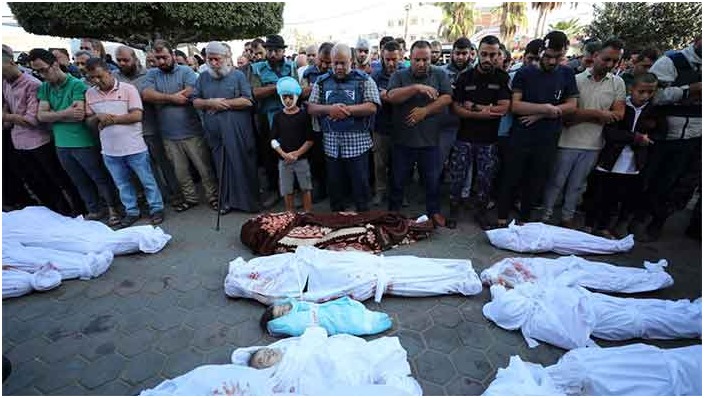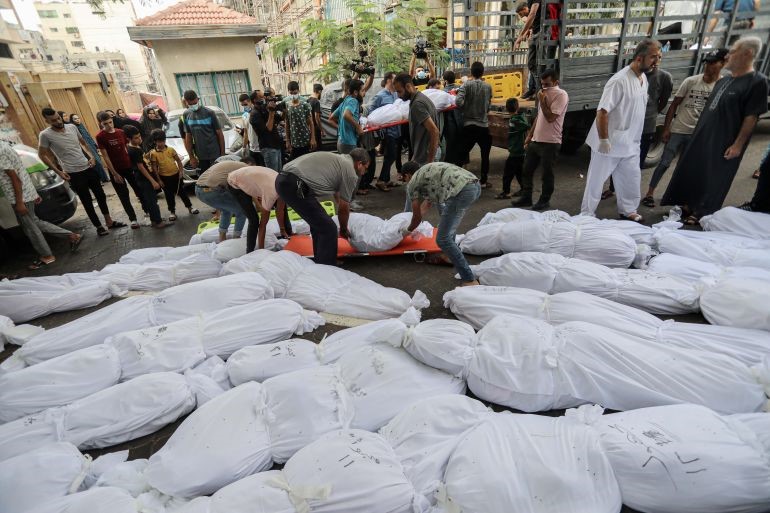Dead Reckoning: Memories of the 1971 Bangladesh War
4 comments | by Sarmila Bose

A long-overdue study of Bangladesh's war of independence.
The wider revision of the conflict's history she implies exonerates the Pakistani government of any plot to rule the east by force, suggests that the Bengali Leader Sheikh Mujibur Rahman let the genie of nationalism out of the bottle but could not control it, and insists that the conflict was a civil war within East Pakistan.
India wanted a bloated casualty figure to justify interfering militarily in the internal matters of Pakistan and now the 3m figure has been firmly instilled in the minds of Bangladeshis. Whatever the number was the killings perhaps could have been contained had the Indian government not funded, trained and provided weapons to the militant rebels (Mukti Bahini) and later invaded the country. Massacre and rampage was thus inevitable.
Bangladeshi authorities claim that as many as 3 million people were killed, although the Hamoodur Rahman Commission, an official Pakistan Government investigation, put the figure as low as 26,000 civilian casualties. The United States intelligence agency, the C.I.A. and State Department estimated that 200,000 people had been killed in the civil war. Sarmila Bose research estimates 50,000 and 100,000 people died.
A truth about the Bangladesh war is that remarkably few scholars and historians have given it thorough, independent scrutiny. Bose's research has taken her from the archives to interviews with elderly peasants in Bangladesh and retired army officers in Pakistan. Her findings are significant.
LISA is of the view that it is not just the arithmetic of killing that is important but to determine facts as factually as possible. History is not a fixed narrative so there is always scope for further analysis Even if one disagrees with Bose but one thing stands out Bose‟s account warns us of how much we need to find out. We are of the view that an International Truth Commission be established with term of reference agreed upon in agreement by Pakistan, Bangladesh and India. The Commission should determine the casualties suffered by all Pakistanis including Bengalis, Biharis, and non-Bengalis/Biharis and opportune blame on parties concerned. It should then be followed by reconciliation on recommended terms. (Editor)
The eyes would widen and the head move from side to side in the striking Bengali gesture of affirmation. "How many were killed?" we would ask refugees who had fled from areas where the Pakistani army and its auxiliaries were attempting to suppress the Bangladesh independence movement. "Lakhs and lakhs!" came the answer. Journalists who covered the Bangladesh war in 1971 remember the phrase with a mixture of amusement and frustration. Lakh is the Indian word for 100,000, and it sometimes seemed as if the majority of Bengalis knew no other number, or, if they did, it was "crore" – ten million – at least when describing the atrocities and depredations of their West Pakistani oppressors. Reporters had no doubt that there were such atrocities. Some of them witnessed bloody incidents or their aftermath, but for the most part correspondents had to rely on the accounts of others. Between the protestations of the Pakistani military, for whom all Bengali deaths were those of "miscreants" or criminals, and the manifest exaggerations of inflamed and sometimes bereaved East Bengalis, it was difficult to steer a measured course.
The numbers mattered, and matter still, because they make the difference between seeing the war as a tragedy and seeing it as a terrible crime, indeed as a genocide. That in turn is important because it profoundly affects the way in which the peoples of South Asia understand both their separate and their common histories. Much that is both wrong and dangerous in the subcontinent today, from Pakistan's paranoia to India's extreme self-righteousness and Bangladesh's sense that it is neglected and ignored, can be traced to the 1971 conflict, even if the roots go back further still. Sarmila Bose's attempt to set the numerical record straight in her aptly named book is a contribution to a debate that ought to have taken place a long time ago but instead has hardly started. It is a grim kind of accountancy, because even when she concludes, as she often does, that fewer, sometimes far fewer, died than claimed, still we are dealing with murder, rape, unnatural deaths and the destruction of individuals and their families in a land that had joyously embraced the idea of Pakistan less than a generation before.
Her method is to take the worst of the alleged atrocities, and then to attempt to reconstruct and quantify them by interviewing the participants on both or, rather, all sides. She wove back and forth between Pakistan and Bangladesh, seeing mainly retired Pakistani officers in the west, and survivors of killings and their relatives in the east, as well as members of the non-Bengali and non-Muslim minorities. Bose (pictured) seems to have been the first to do this. It is a method not without its problems. My own feeling, remembering how charming Pakistani officers, like their Indian equivalents, can be, is that she may have been a bit too ready to accept the honourable, just-trying-to-do-our-duty image that those officers naturally prefer to convey, and that she may also be too convinced that the received wisdom needs to be entirely overturned. Yet when she underlines how stretched the Pakistani forces were, how unready they were for the role of suppression that was thrust on them, and how perplexed they were in the face of a Bengali hostility that seemed to them so disproportionate, what she writes rings very true.
Bose's case-by-case arithmetic leads her in the end to estimate that between 50,000 and 100,000 people died in 1971. One lakh, in other words, at most. One cannot say that she absolutely proves this, but her evidence points in that direction, and, in any case vastly away from the figure of 3 million still proclaimed in Bangladesh and India. The wider revision of the conflict's history she implies exonerates the Pakistani government of any plot to rule the east by force, suggests that the Bengali leader Sheikh Mujibur Rahman let the genie of nationalism out of the bottle but could not control it, and insists that the conflict was a civil war within East Pakistan. The killings by Bengalis of non-Bengali minorities, of Bengalis who stuck with the idea of a united Pakistan, and even of some Hindu Bengalis – all of whose deaths were attributed at the time to the Pakistani army – needs to be reckoned in any fair balance. The notion that the Bangladesh movement was non-violent, even Gandhian, was always fantastical. Bose has written a book that should provoke both fresh research and fresh thinking about a fateful turning point in the history of the subcontinent.





